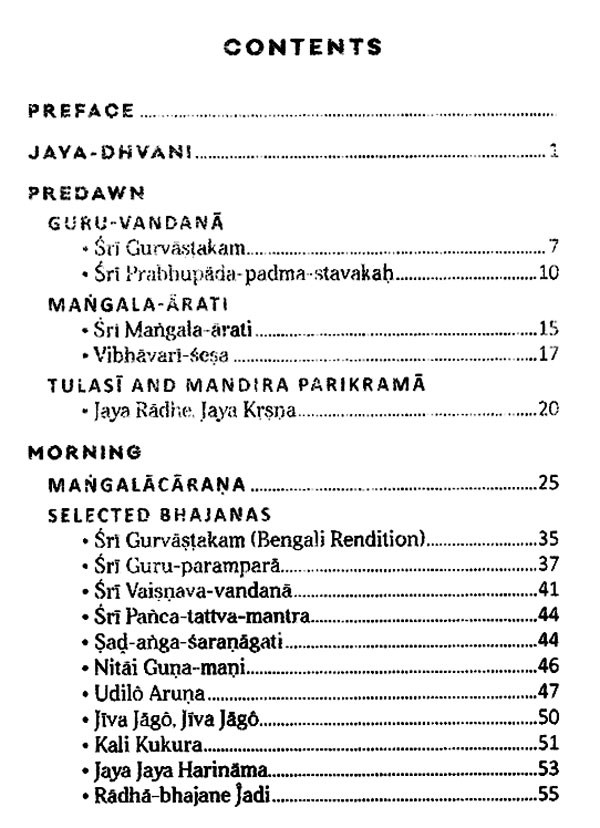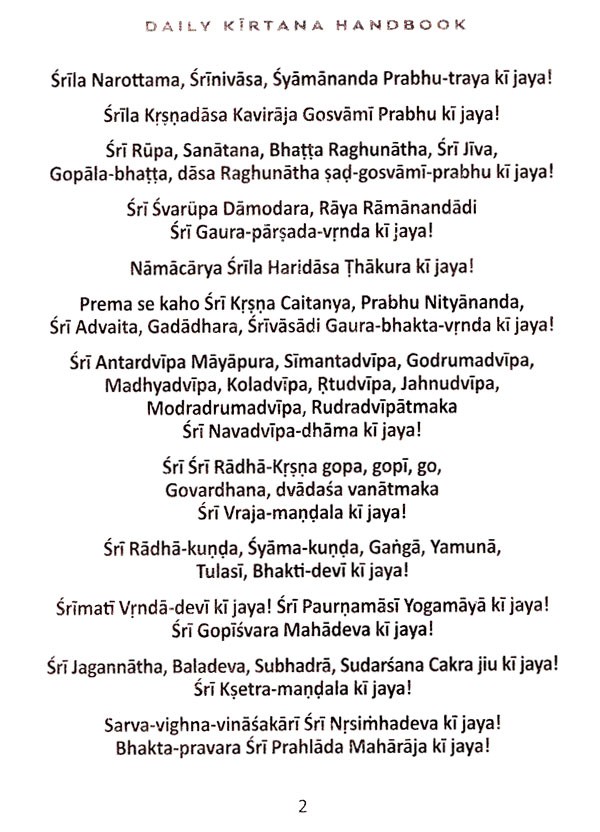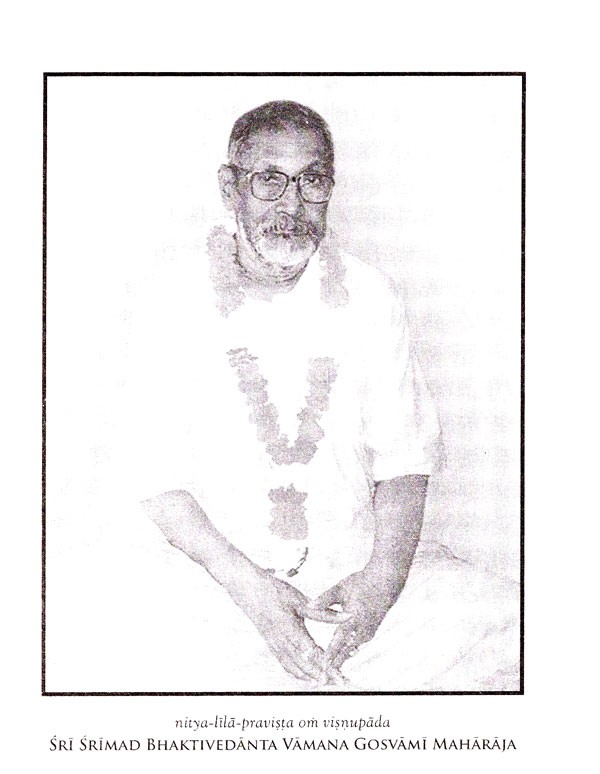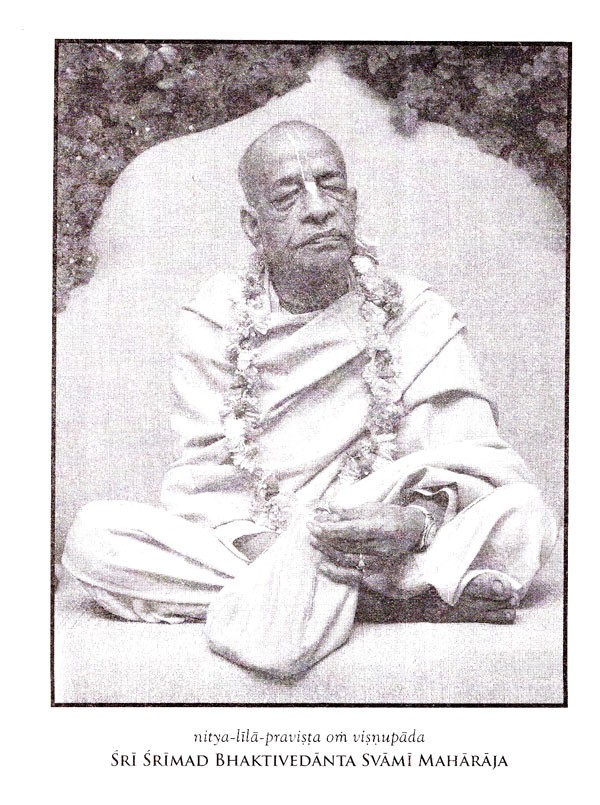
Daily Kirtana Handbook
Book Specification
| Item Code: | NBZ416 |
| Publisher: | Gaudiya Vedanta Publications |
| Language: | English |
| Edition: | 2016 |
| ISBN: | 9781633161429 |
| Pages: | 168 (8 B/W Illustrations) |
| Cover: | PAPERBACK |
| Other Details | 5.50 X 4.10 inch |
| Weight | 100 gm |
Book Description
By the mercy of Śrī Śrīmad Bhaktivedānta Nārāyana Gosvāmī Mahārāja, we humbly present this booklet containing the most commonly sung songs from Sri Gaudiya Gītiguccha, an anthology of Bengali and Sanskrit songs written by our Gaudiya Vaisnava ācāryas. These selected songs have been organized in accordance with the following daily program, typically followed by mathas under the auspices of Śrī Śrīmad Bhakti Prajñāna Keśava Gosvāmī Mahārāja and his followers:
4:20 am - Śrī Gurvāstakam, Śrī Prabhupāda-padma-stavakah
4:30 am - Śrī Mangala Arati
4:45 am – Tulasī parikramā and mandira parikramā
6:30 am - morning bhajanas
7:30 am - class
8:30 am – Tulasī parikramā and mandira parikramā (Hari Haraye Namaḥ Krsna)
11:30 am - bhoga offering
12:00 pm - noon ārati
5:00 pm - evening bhajanas
6:00 pm - class
7:00 pm - evening ārati
7:20 pm – Tulasī parikramā and Hari Haraye Namah Krşņa
Although this book contains the standard kīrtana and ärati program, it should be noted that most of the kīrtanas herein can actually be sung at any time.
We have included the songs for śrī guru-pūjā and tulasipūjā in the morning section, because many devotees sing those kirtanas then. The daily performance of guru-pūjā and tulasī-pūjā is not a practice in all mathas. Guru-pājā is, however, to be performed on festivals days honoring śrī guru, and our guruvarga recommend the performance of tulasī-pūjā during the month of Keśava (April – May).
Throughout this book, the diacritic markings used to indicate the pronunciation of Bengali and Sanskrit words are pronounced as follows: ā as in father, i as in see, ū as in boot, s as the ri in rip, ț as in train, d as in drain, d as in the American pronunciation of tt in butter, n as in ink, ś and s as in the sh in ship, and c as in chip.
The characters ĵ and ô are pronounced the same as i and o. The circumflex (^) above the two letters is there to represent different Bengali characters that have the same pronunciation.
The character ã is the same as ā, but the tilde (^) above indicates that the sound should be nasal. This is done by diverting some of the breath to the nose.
**Contents and Sample Pages**














